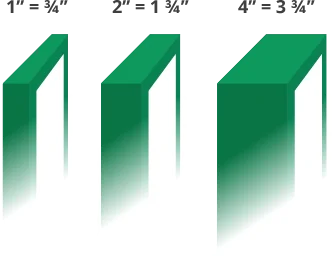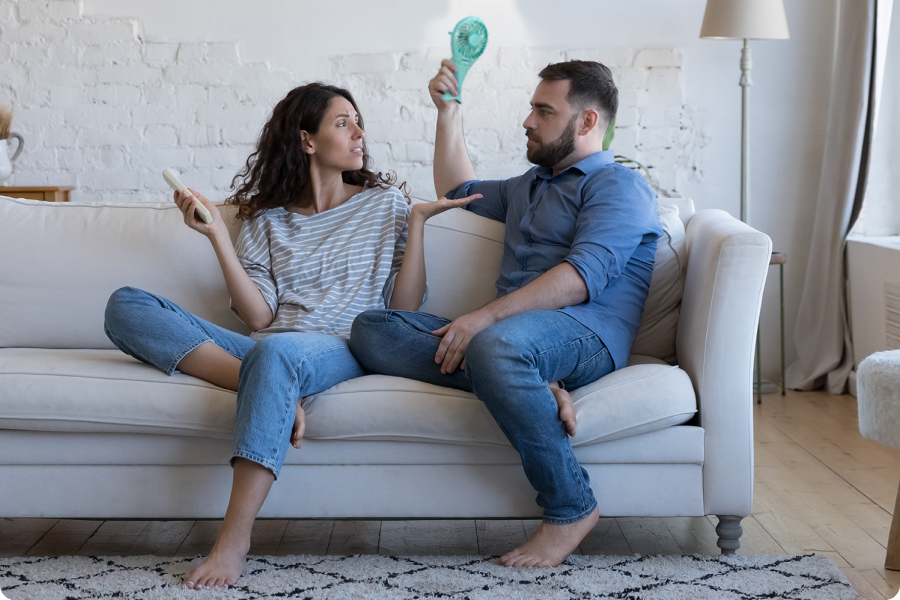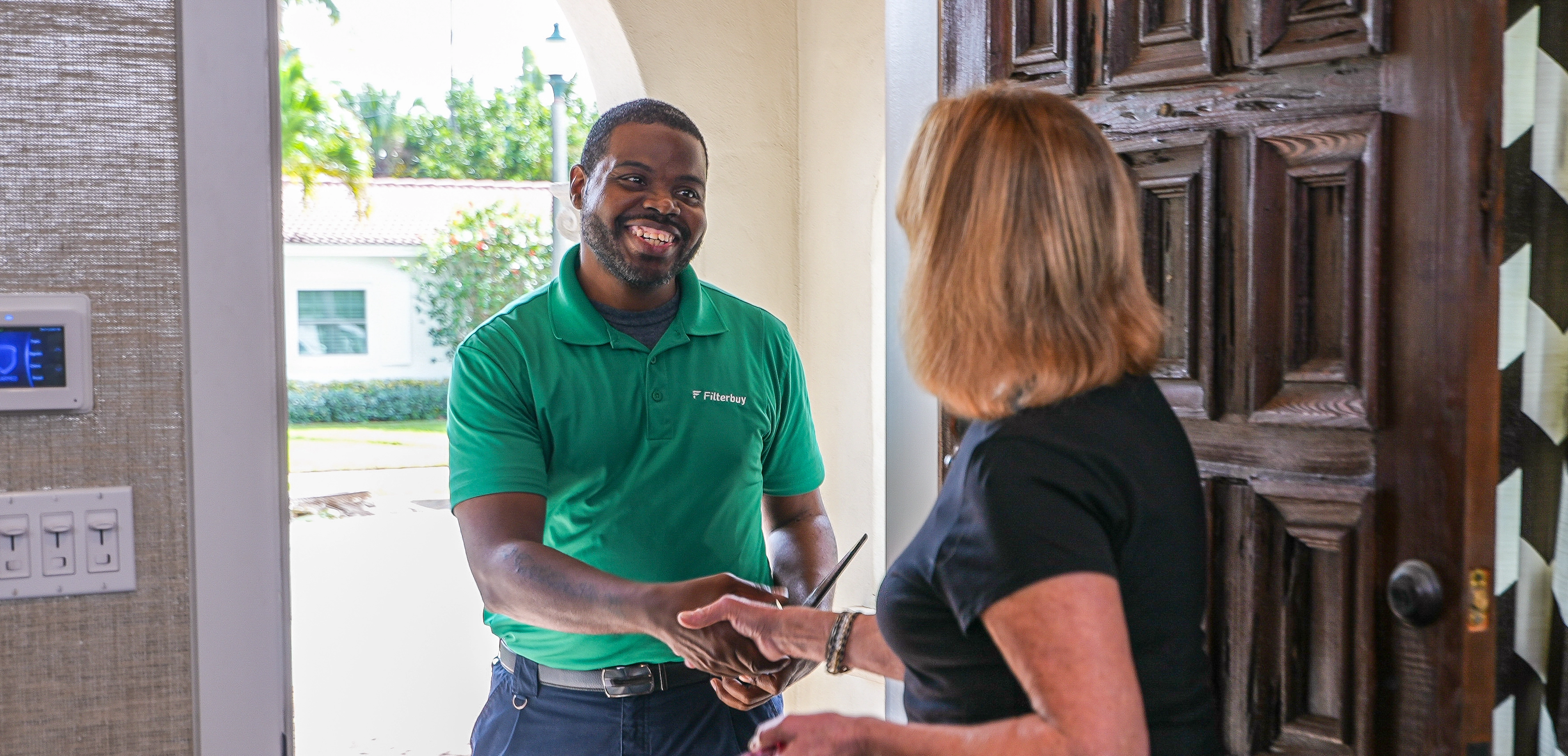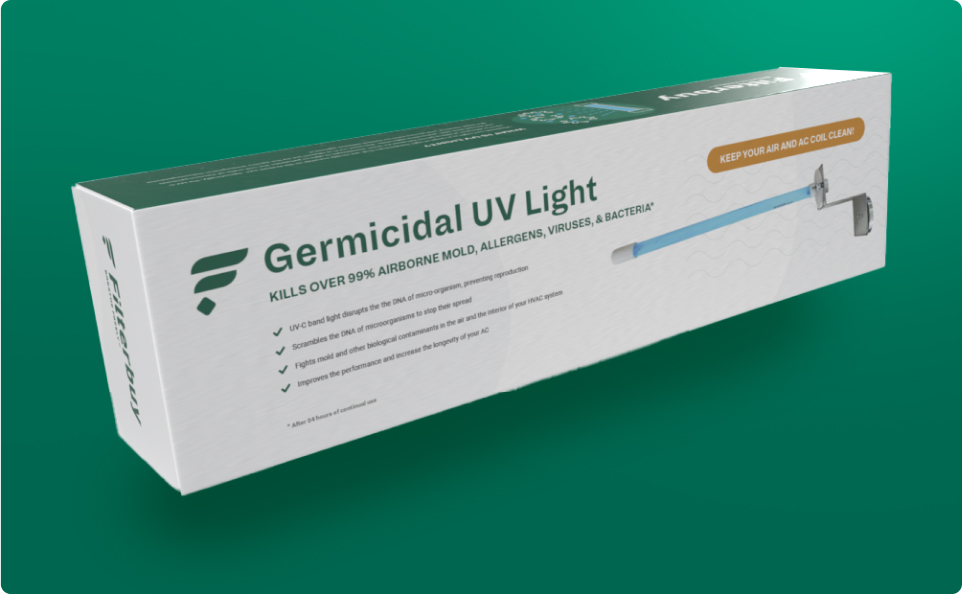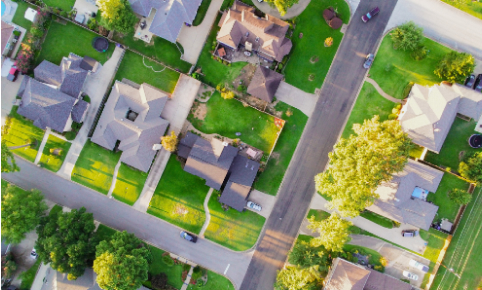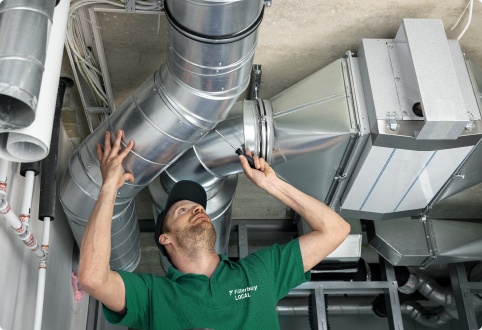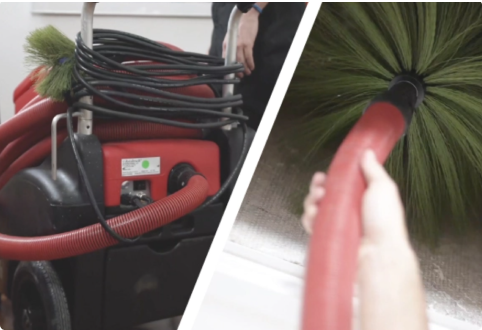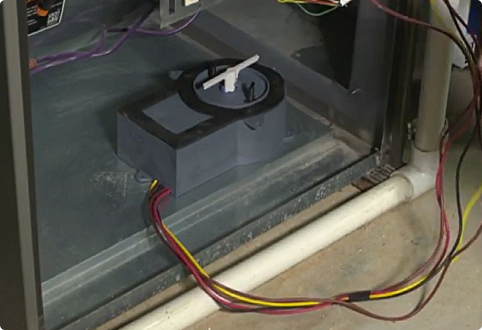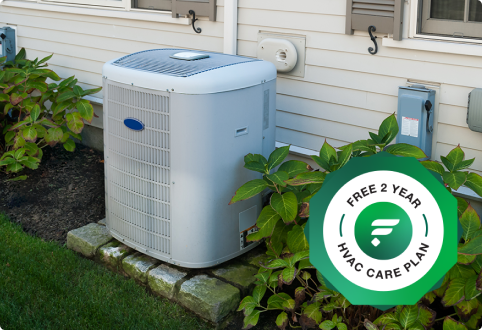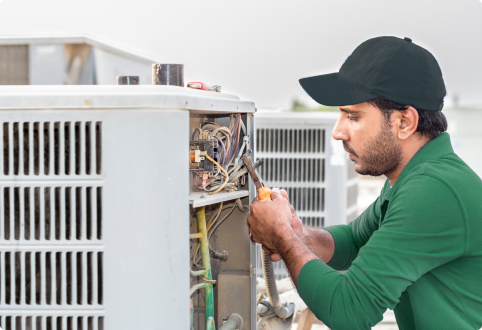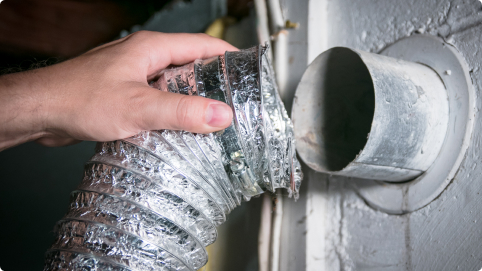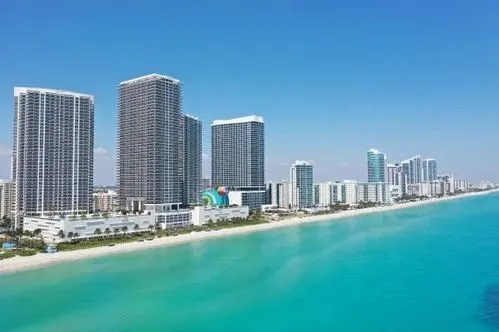Welcome to Filterbuy HVAC Solutions, the best HVAC UV light installation service company proudly serving in and near the greater Hallandale Beach, FL area. Please let us know how we can help solve your Hallandale Beach HVAC UV light installation needs with professional, affordable, and fast residential and commercial HVAC services by getting a free online quote or by giving our friendly HVAC specialists a call. We look forward to hearing from you!
HVAC UV Light Installation in Hallandale Beach FL
Many Hallandale Beach, FL homes and commercial buildings seek professional HVAC UV light installation for its tremendous benefits to homeowners and office building owners. Among these benefits that will help the indoor air quality for your home and office building involves better air filtering power for your HVAC system.
The use of ultraviolet (UV) light technology has been around since the early 20th century when it was used mainly for sterilization purposes. In recent years, however, this technology has become more widely utilized in residential and commercial buildings across the country due to its ability to reduce energy costs while still providing clean indoor air. The installation of UV lights within an HVAC system helps to eliminate dust particles from circulating through the home or building by trapping them inside filter pads before they get pushed out into the living space. Additionally, these filters also help to keep pollutants such as pollen, pet dander, smoke particles, and other allergens from accumulating in air ducts over time.
When looking for qualified professionals who offer HVAC UV light installation services in Hallandale Beach, FL there are several factors one should consider such as experience level, cost estimates provided by each company, customer reviews/recommendations from previous clients, and whether or not any warranties come along with their service package. By thoroughly researching all available options one can make sure they hire a reliable contractor capable of completing the job correctly at a fair price point.
Definition Of HVAC UV Light System
HVAC UV light systems are becoming increasingly popular in residential and commercial buildings. To put it simply, HVAC stands for heating, ventilation, and air conditioning; the term “UV” is derived from ultraviolet radiation which is used to purify the air. This type of system utilizes ultraviolet rays to eliminate airborne particles such as mold spores, bacteria, viruses, dust mites, and other allergens that can cause respiratory illnesses or aggravate existing conditions.
The primary benefit of installing an HVAC UV light system is improved indoor air quality (IAQ). Additionally, these systems help reduce energy costs by eliminating the need for additional filters or cleaning methods. With the right installation techniques and maintenance practices in place, this technology can provide a safe and healthy environment for everyone who lives or works in the building.
Benefits Of Installing An HVAC UV Light System
Installing an HVAC UV light system can offer a variety of benefits to homeowners. This type of system helps eliminate odor-causing bacteria, mold spores, and other air pollutants from the air in homes. The installation of this type of system also helps reduce energy costs because it limits how much heating or cooling is required for proper climate control. Additionally, these systems may help improve indoor air quality for allergy sufferers by reducing airborne allergens such as pollen, dust mites, and pet dander. Furthermore, due to its ability to kill germs, HVAC UV light systems work well in medical facilities where hygiene is key.
The main benefit of installing an HVAC UV light system is that it keeps the air clean while helping to maintain optimal temperatures throughout the home year-round. By controlling temperature levels within the home, this type of system reduces stress on both the cooling and heating systems thereby extending their life expectancy. As a result, replacing or repairing either one may not be necessary for many years after installation which saves money in maintenance costs over time too.
Another advantage to having an HVAC UV light system installed is that it requires minimal upkeep once set up properly according to manufacturer instructions. Most models don't need filter changes like some other types of air purifiers do and they are practically silent when running so there's no added noise pollution inside the home either. With all these advantages combined, it’s easy to see why more and more people are choosing to install an HVAC UV light system in their homes every day.
The choice between different types of HVAC UV light systems available depends upon individual needs and preferences; however, understanding how each works will help determine what’s best suited for any particular situation.
Types Of HVAC UV Light Systems Available
The power of light is undeniable; it can both create and destroy. It provides us with the energy to live, work, and play while also providing a way to keep our environment clean and healthy. HVAC UV lights provide an innovative way to help reduce airborne contaminants in homes and businesses, making them a great addition to any indoor air quality system. There are several types of HVAC UV light systems available which vary based on their application, size, cost, and installation requirements.
For residential applications, compact single-bulb units are often used as they are easy to install without needing major modifications or additional components. These smaller bulbs typically come pre-mounted on a bracket that allows for quick setup and placement in return air ducts or other areas where airborne particles need to be reduced.
Many commercial buildings may require higher output models due to large space sizes or high levels of contamination present in the area. These larger systems usually consist of multiple bulbs arranged in either linear or circular configurations depending on the specific needs of the building. Finally, ozone generators offer another option for those seeking powerful decontamination capabilities from their HVAC UV lighting solution but should only be used if all other methods have been exhausted due to potential health risks associated with ozone exposure.
HVAC UV lighting solutions offer many benefits including improved air quality by reducing harmful bacteria such as mold spores, dust mites, pollen particles, and volatile organic compounds (VOCs). When combined with professional installation services in Hallandale Beach FL organizations can ensure these systems operate at peak efficiency for maximum benefit over time.
Professional Installation Services In Hallandale Beach, FL
The installation of HVAC UV light systems requires the expertise of a professional contractor or technician. Without proper installation, the system may not operate as intended and could be dangerous to occupants of the building. Professional contractors in Hallandale Beach, FL are experienced in installing these types of systems and have access to quality materials needed for the job. These installers also know local regulations regarding HVAC UV light systems that must be followed when installing them into an existing structure.
During the installation process, professionals will inspect all components before connecting them. This inspection is important because it ensures that each part is functioning properly and there is no potential for any hazards due to improper connections. Additionally, professionals can provide advice on how best to maintain your system over time so you get optimal performance from it. They can also offer suggestions for upgrades that improve efficiency and reduce energy costs associated with operating the unit.
Professional installers in Hallandale Beach, FL are knowledgeable about all aspects of HVAC UV light system installation and can ensure that everything is done correctly according to code and industry standards. With their expertise, they can help customers save money by providing cost-effective solutions such as upgraded parts or improved ventilation systems that increase airflow in areas where bacteria or fungi may linger otherwise unchecked. The advantages of having professional installation services provided cannot be overlooked; therefore, hiring an experienced installer should always be considered when considering this type of upgrade or repair project.
Advantages Of Professional Installation Services
The installation of an HVAC UV light system can provide numerous advantages to homeowners. Professional installation services are often recommended as they offer the expertise and experience necessary for a successful, safe setup with minimal disruption. Such services are especially important when dealing with components that require precise placement or electrical connections.
Professional installers have been trained in the proper techniques and safety protocols associated with installing these systems. They also possess knowledge about local codes and regulations which must be followed during the setup process. This is essential to ensure compliance with all applicable laws and minimize potential risks from improper installations. Additionally, professional installers generally use quality materials that meet industry standards, thus ensuring the long-term performance of the system.
When choosing a professional installer for HVAC UV light systems, it is best to research their background and references thoroughly. Doing so will ensure the chosen provider has adequate experience and qualifications needed for this type of job. It is also wise to inquire whether any warranties or guarantees come along with the service offered by each contractor before deciding on who should perform the work. With careful consideration, finding a qualified service provider should lead to lasting results that exceed expectations.
How To Choose An Appropriate HVAC UV Light System
When selecting an HVAC UV light system, there are several factors to consider. It is important to choose a unit that will provide effective and efficient operation while meeting current safety standards.
To make the best selection for your needs, follow these guidelines:
1. Choose a system based on size requirements:
- Unit size – Select a unit with enough capacity to handle the required air flow rate in the space it serves.
- Room size – Consider the overall room size when selecting a suitable system.
2. Ensure compatibility with existing equipment:
- System components – Review all related parts of the system (air handler, ductwork) to ensure proper installation and operation with other connected systems or components.
- Electrical power supply – Check whether sufficient electrical power supplies have been installed or if additional wiring is necessary.
3. Prioritize efficiency ratings:
- Energy Star rating – Make sure that the selected model has an approved energy efficiency certification by looking at its Energy Star rating.
- Air/water filtration capabilities – Verify that the chosen unit is capable of providing adequate filtering of airborne particles and water contaminants before installing it in the home or office environment.
By understanding these criteria and taking into account their importance to one's specific needs, choosing a reliable and safe HVAC UV light system can be made easier. Furthermore, by researching different models available on the market today, individuals can find an appropriate solution for their particular situation without compromising performance or quality standards.
Maintenance Tips For A Long-Lasting HVAC UV Light System
Proper maintenance of an HVAC UV light system is essential for optimal performance and longevity. Regularly checking the filter, bulb, and airflow are important components of preventive maintenance that can help extend the life of your system. Additionally, it’s also recommended to keep up with routine cleaning and sanitizing processes to make sure your system continues to operate at its best.
The most important part of maintaining an HVAC UV light system is ensuring the filter remains clean. A dirty or clogged filter reduces airflow which leads to poor circulation in the ductwork as well as reduced efficiency in filtering out bacteria and other harmful particles from the air. It is advisable to check the filter once every three months, replace it when necessary, and thoroughly vacuum any dirt buildup on coils or grills.
It is also critical to change bulbs regularly because they will eventually become less effective over time due to fading quality or manufacturer defects. By replacing bulbs every 6-12 months, you can ensure optimum functionality from your HVAC UV light system by providing a consistently strong level of ultraviolet radiation throughout each cycle. In addition to changing bulbs routinely, it’s important to monitor air flow levels through regular adjustment checks as dust accumulation can reduce overall effectiveness if left unchecked.
Finally, good sanitation practices should be employed along with all other maintenance activities for maximum protection against germs and viruses in living spaces. Sanitize surfaces such as cooling fins and condensate pans with approved cleaners after each servicing interval to prevent microbial growth within the unit itself while keeping indoor air free from contaminants like mold spores and pet dander. With these tips in mind, homeowners can maintain their HVAC UV light systems for long-term use without compromising efficiency or safety measures.
Common Problems With HVAC UV Light Systems
Common problems with HVAC UV light systems may arise due to several reasons. In some cases, the installation or maintenance can be faulty, resulting in improper operation of the system. Malfunctioning components such as bulbs and switches can also lead to issues related to performance. Additionally, the age of the equipment is another factor that should be taken into account when assessing potential problems with an HVAC UV light system.
The most common problem associated with HVAC UV lights involves insufficient coverage for intended areas. If not properly installed, there could be gaps between lamps which leave certain rooms without sufficient protection from microorganisms like bacteria and fungi. Another issue regarding inadequate coverage includes too much distance between lamps; if this happens, it will not allow enough time for proper sanitization processes to take place before air passes through the filter again. Moreover, poor lamp positioning can result in low levels of output intensity reaching targeted surfaces and objects within a room.
Incorrect or inadequate maintenance practices are also responsible for common problems encountered with HVAC UV light systems. Faulty cleaning methods can reduce its effectiveness since dust buildup on lenses affects their ability to transmit ultraviolet radiation efficiently throughout a space. Similarly, failure to replace old bulbs or failed electronic ballasts on schedule results in reduced efficiency over time as well as potentially hazardous conditions caused by short circuits within the device itself. Possible solutions for these common issues include regular inspections and routine maintenance procedures such as changing defective parts immediately and conducting thorough cleanings at least once every 6 months depending on usage patterns.
Possible Solutions For Common Problems
When installing HVAC UV light systems, it is important to be aware of common problems that may arise and their possible solutions. Faulty connections, power outages, and incorrect wiring can all lead to malfunctioning systems. Fortunately, these issues can often be resolved with the following steps:
1. Inspect the electrical connection for any loose wires or frayed insulation.
2. Check if the power supply has been disrupted due to an overload or other issue.
3. Ensure that the wiring is correct by verifying against the installation manual's diagrams.
If a problem persists after taking these measures, contacting an experienced technician might be necessary to resolve more complex issues such as circuit board failure or damaged equipment parts. Working with a knowledgeable team can help ensure that your system is functioning properly so you can enjoy its many benefits without interruption.
Replacement Parts For HVAC UV Light Systems
As an effective solution to common HVAC system problems, ultraviolet light systems can be a great asset. However, when replacement parts are needed for these systems it is important to know where to look and what components will be necessary. This section provides information on how to source the right parts for installation in Hallandale Beach, Florida.
When looking for UV light system replacement parts, manufacturers should always be considered as primary sources of components. Many companies have an online presence with access to their catalogs and customer service departments that offer advice on which parts are needed and how they may be acquired. A quick search engine query will provide potential customers with contact information and other details about the available products from different suppliers. Furthermore, some major retailers such as Home Depot or Lowe’s may stock certain types of replacement parts for UV light systems used in HVAC applications.
For those who need assistance installing new UV lights in Hallandale Beach, FL there are professional services available that specialize in this type of work. These firms typically employ experienced technicians who understand the intricacies of working with high-intensity ultraviolet radiation and can guide homeowners through the process safely and effectively. It is advisable to research local providers before hiring any company by checking licensing credentials, years in business, and customer reviews before making any commitments.
Frequently Asked Questions
How Much Does It Cost to Install UV Light in HVAC?
Installing a UV light in your HVAC system can cost anywhere from a few hundred to a few thousand dollars, depending on the type of UV light system you choose and the complexity of the installation. Factors that can influence the cost include the size of your HVAC system, the brand and quality of the UV light, and whether you hire a professional to install it.
Is It Worth Installing UV Light in the HVAC?
Whether installing a UV light in your HVAC system is worth it depends on your specific needs and circumstances. UV lights can help improve indoor air quality by killing mold, bacteria, and viruses that pass through the HVAC system. This can be especially beneficial for individuals with respiratory issues or allergies. However, it's important to consider the upfront cost of installation and ongoing maintenance when determining if it is worth it for you.
Can I Install a UV Light in My HVAC System?
In most cases, you can install a UV light in your HVAC system. However, it is recommended to consult with a professional HVAC technician to ensure that the UV light is installed correctly and safely. Improper installation can reduce the effectiveness of the UV light or even cause damage to your HVAC system.
What Is the Disadvantage of UV Light in HVAC?
One disadvantage of UV lights in HVAC systems is that they are not effective against all types of air pollutants. While UV lights can kill bacteria, viruses, and mold, they may not be as effective against larger particles like dust and pet dander. Additionally, UV lights require regular maintenance to ensure they are working properly and may need to be replaced periodically.
Do HVAC UV Lights Use a Lot of Electricity?
HVAC UV lights are designed to be energy-efficient and typically do not use a significant amount of electricity. The energy consumption of a UV light in an HVAC system is generally low compared to the energy used by the HVAC system itself.
Does UV Light Damage AC Coils?
UV light can potentially damage AC coils if the UV light is not installed properly or if it is the wrong type for the system. It is essential to follow the manufacturer's guidelines for installation and maintenance to prevent any damage to the AC coils.
What Is the Life Expectancy of a UV Light for HVAC?
The life expectancy of a UV light for HVAC systems can vary depending on the quality of the light and how well it is maintained. On average, UV lights for HVAC systems can last anywhere from 1 to 5 years. It is recommended to replace the UV light at regular intervals to ensure optimal performance.
How Long Do HVAC UV Lights Last?
HVAC UV lights typically last between 9,000 to 14,000 hours, which translates to around 1 to 2 years of continuous use. Regular maintenance and replacement of UV lights are crucial to ensure they continue to effectively kill mold, bacteria, and viruses in your HVAC system.
What Are the Cons of UV Lamps?
Some cons of UV lamps include the need for regular maintenance, the potential for improper installation leading to reduced effectiveness, and the fact that they may not be effective against all types of air pollutants. Additionally, UV lamps can be costly to install and replace, which may be a drawback for some homeowners.
Where Is the Best Place to Put UV Light in HVAC?
The best place to install a UV light in an HVAC system is typically near the evaporator coil or in the return air duct. Placing the UV light near the evaporator coil can help prevent mold and bacteria growth on the coil while placing it in the return air duct can help kill airborne contaminants as they pass through the system.
Can UV Light Damage the Air Handler?
UV light can potentially damage the air handler if it is not installed correctly or if the wrong type of UV light is used. It is essential to consult with a professional HVAC technician to ensure that the UV light is compatible with your system and installed properly to prevent any damage to the air handler.
Do HVAC UV Lights Get Hot?
HVAC UV lights are designed to produce UV-C light, which is not hot to the touch. UV-C light is used to kill mold, bacteria, and viruses without generating heat. This means that HVAC UV lights do not get hot during normal operation and do not pose a risk of overheating.
Here is the nearest branch location serving the Hallandale Beach area…
Filterbuy HVAC Solutions - Miami FL
1300 S Miami Ave Unit 4806, Miami, FL 33130
(305) 306-5027
https://maps.app.goo.gl/1Y7FZGsYN4mzK5kZ8

.webp)
.webp)
.webp)
.webp)
